
Plan Your Trip to Great Sand Dunes National Park
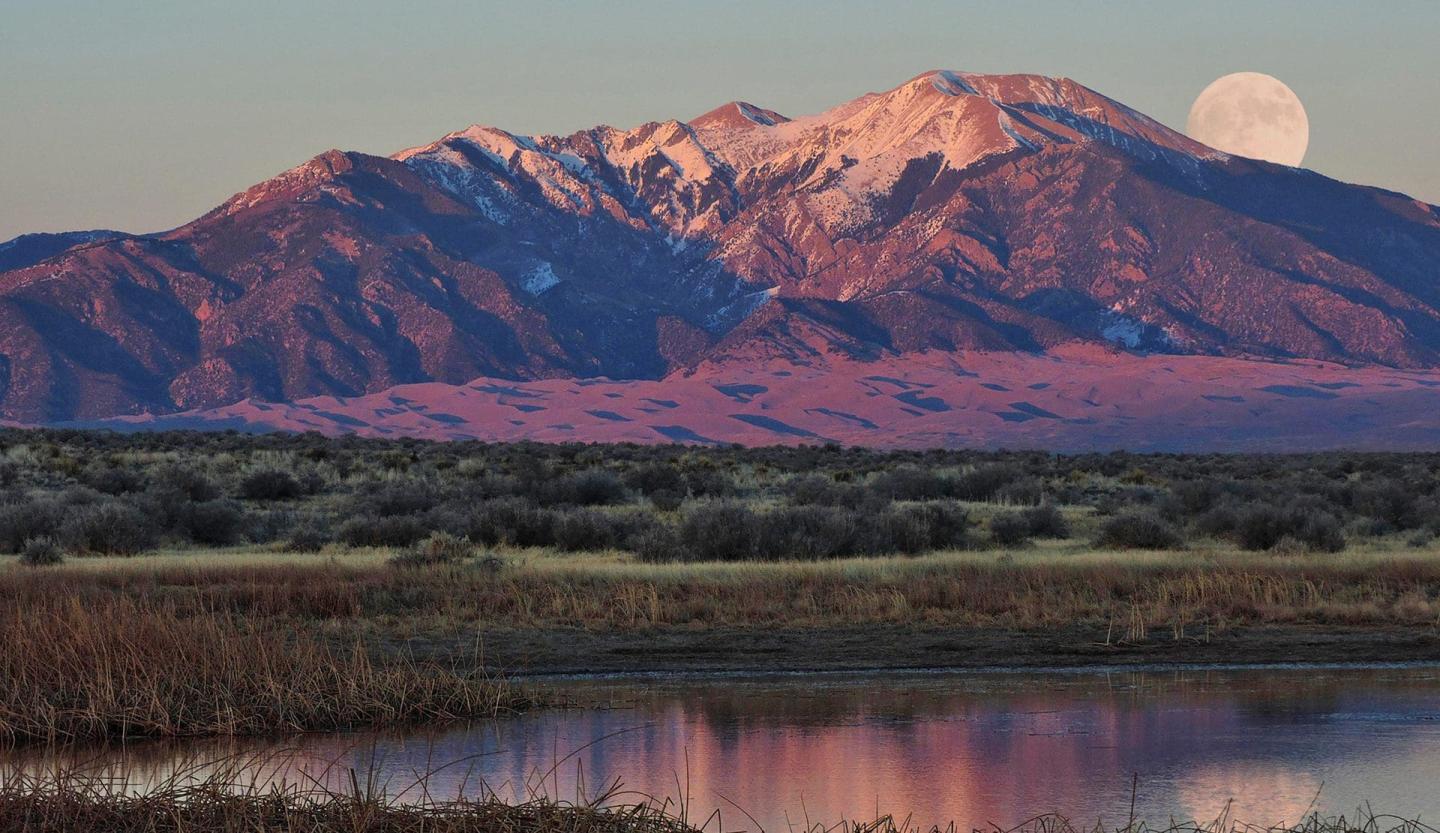
Explore soaring sand dunes set against snow-capped peaks at Great Sand Dunes National Park and Preserve. This Colorado park protects the tallest dunes in North America, formed over countless years by wind and water in the heart of the San Luis Valley. As a preserve, the park provides the perfect balance of outdoor recreation and natural preservation, serving as a sanctuary for hundreds of vulnerable species of wildlife and plants. Enjoy a stunning natural wonder that preserves delicate and diverse ecosystems from beautiful wetlands to alpine tundra.
Great Sand Dunes is a place of cultural significance—ancestral homelands to the Ute, Apache, and other Indigenous peoples who have long held spiritual and practical connections to this unique environment.
Read on to find out why Great Sand Dunes National Park and Preserve should be your next national park adventure, plus get tips for planning your journey to this unforgettable corner of Colorado.
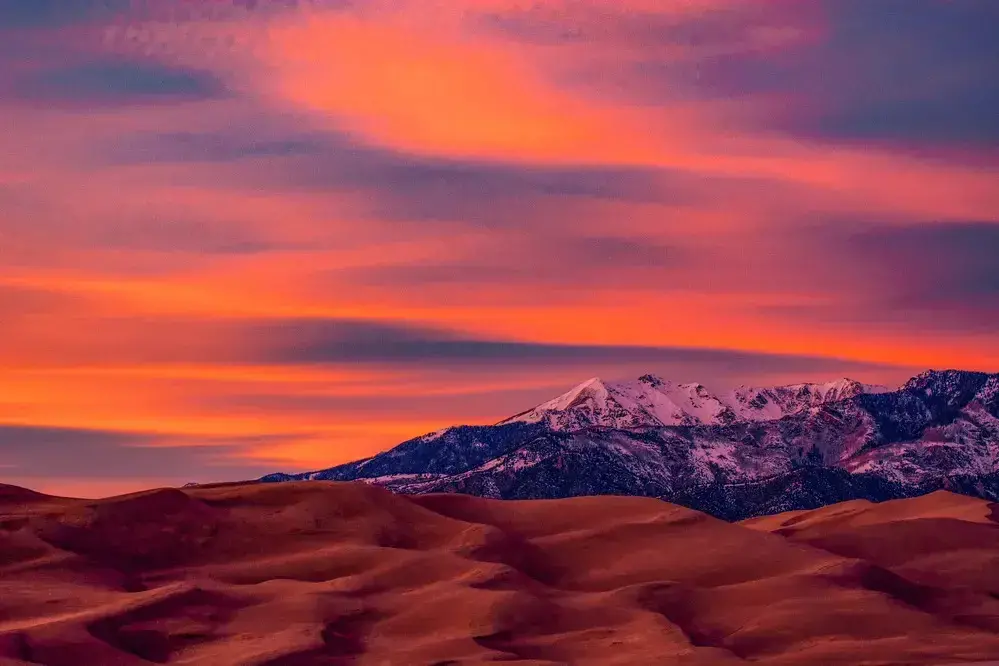
When to visit Great Sand Dunes
Visit Great Sand Dunes National Park and Preserve year-round, but spring and fall may be the best times to hike the dune field. Late spring and early summer are especially popular because Medano Creek often runs with clear, cool water. If you're seeking a quieter experience with cooler weather, fall is an excellent time to visit and witness golden aspens. While winter offers the most solitude and the chance to see the dunes dusted with snow, be prepared for chilly weather (dress in layers).
Photos from the parks
Tag @WesternNationalParks to have your trip featured
What to do at Great Sand Dunes National Park and Preserve
There’s plenty to experience at Great Sand Dunes National Park and Preserve.
-
Climb North America’s tallest dunes: Wander through the expansive dune field. A journey to High Dune will take at least two hours and over 2.5 miles round trip. If you’re looking to hike one of the tallest dunes in North America, the hike to Hidden Dune is about 7 miles and will take at least 6 hours roundtrip. Star Dune is most easily hiked by walking the 2 miles from the Dunes Parking Lot to the Medano Creek bed before climbing to the summit. We recommend early morning or evening hikes during warmer months.
-
Sled or sandboard on the dunes: Rent a sandboard or sled from outfitters in Alamosa or Hooper. The best dunes for sledding and boarding are just past the main dune field near High Dune on First Ridge for softer sand and gentler slowdowns. Use sandboards and sand sleds that are specifically made for sand.
- Enjoy the seasonal Colorado beach at Medano Creek: In spring and early summer, meltwater from the Sangre de Cristo Mountains fills Medano Creek at the base of the dunes, and its “surge flow” even imitates ocean waves. Visitors of all ages can splash, float, or just relax on the sandy beach. Check the flow conditions and predictions on the park’s website before visiting.
-
Hike forested trails in the Sangre de Cristo Mountains: The Montville Nature Trail is a 0.5-mile loop with outstanding views of the dune field and surrounding mountain peaks. For more of a challenge, take the 7-mile Mosca Pass Trail along a forested creek into the Sangre de Cristo Mountains. Access both trailheads just east of the visitor center on Highway 150. These trails are good options in the spring and fall and can provide relief from the heat of the dunes during midday in summer. Check trail conditions before hiking in winter.
-
Gaze up at starry night skies: For the best stargazing, spend the night camping at Piñon Flats (open April through October), featuring sites within walking distance of the dunes or camp in the backcountry with a free permit. For Milky Way views, look up at the sky at least an hour and a half before sunrise or after sunset, or an hour before or after moonrise and moonset —or, better yet, on a moonless night.
- Learn more about the geology, organisms, and history at the Great Sand Dunes Visitor Center: Get oriented with a 20-minute film about the park’s unique environment and geology. You can explore interactive exhibits on the region's diverse ecosystems and human history. The center is open daily from 9 AM to 4:30 PM.
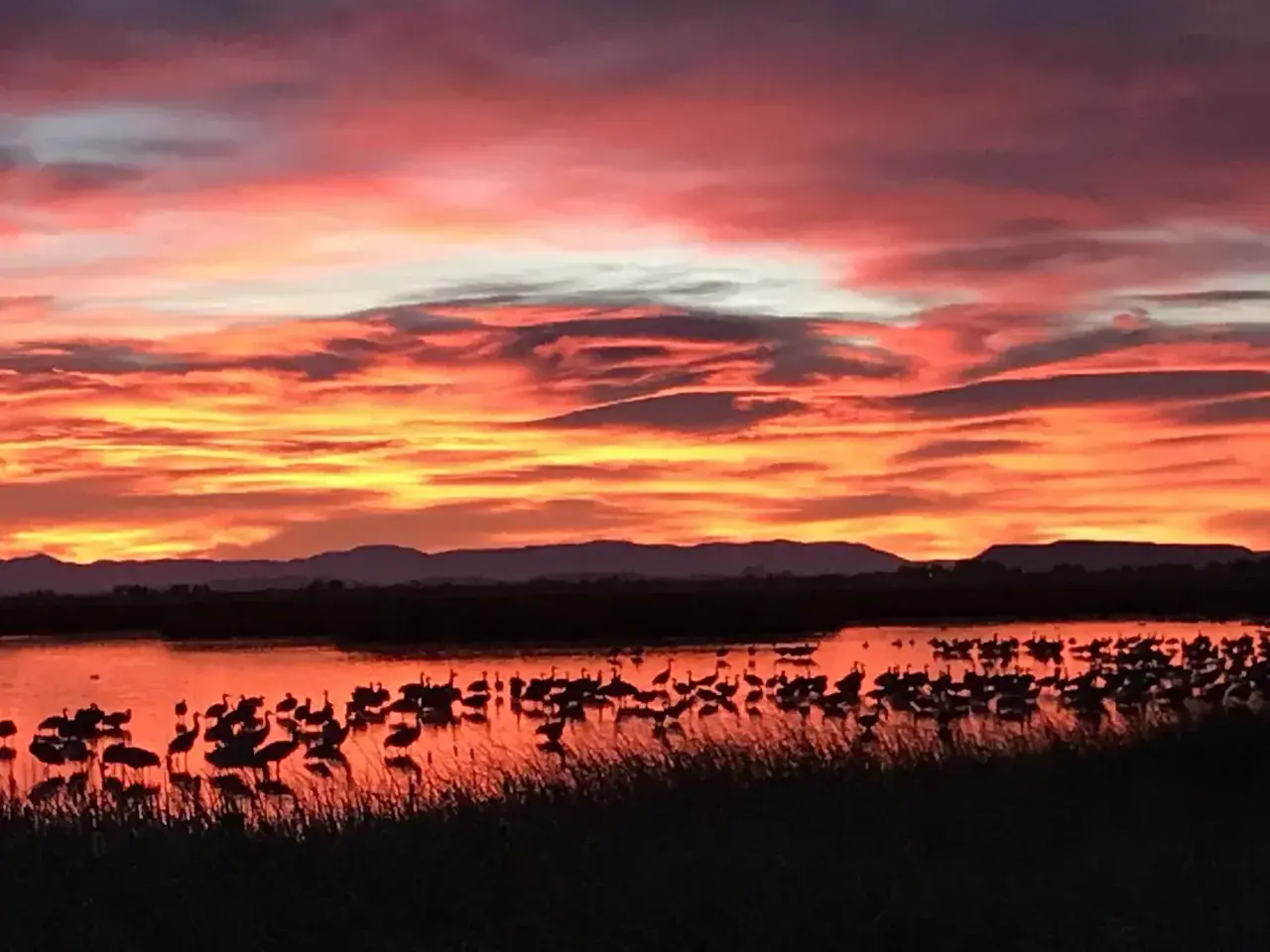
Exploring the San Luis Valley: Alamosa, Colorado
Great Sand Dunes National Park and Preserve is a destination unto itself, where you can spend several days enjoying the dramatic scenery of sand and mountain peaks. However, the San Luis Valley and city of Alamosa are full of other national parks and attractions you can add to deepen and add variety to your trip. Outdoor adventures for all types and tempos abound, from climbing 14ers like Blanca Peak to soaking in the hot springs in the area, including Joyful Journey Hot Springs and the historic Splashland Hot Springs. The Alamosa National Wildlife Refuge and San Luis Lakes State Wildlife Area are excellent spots for watching sandhill cranes and other migrating birds during spring and fall. Check out our 12-hour itinerary for more ideas.
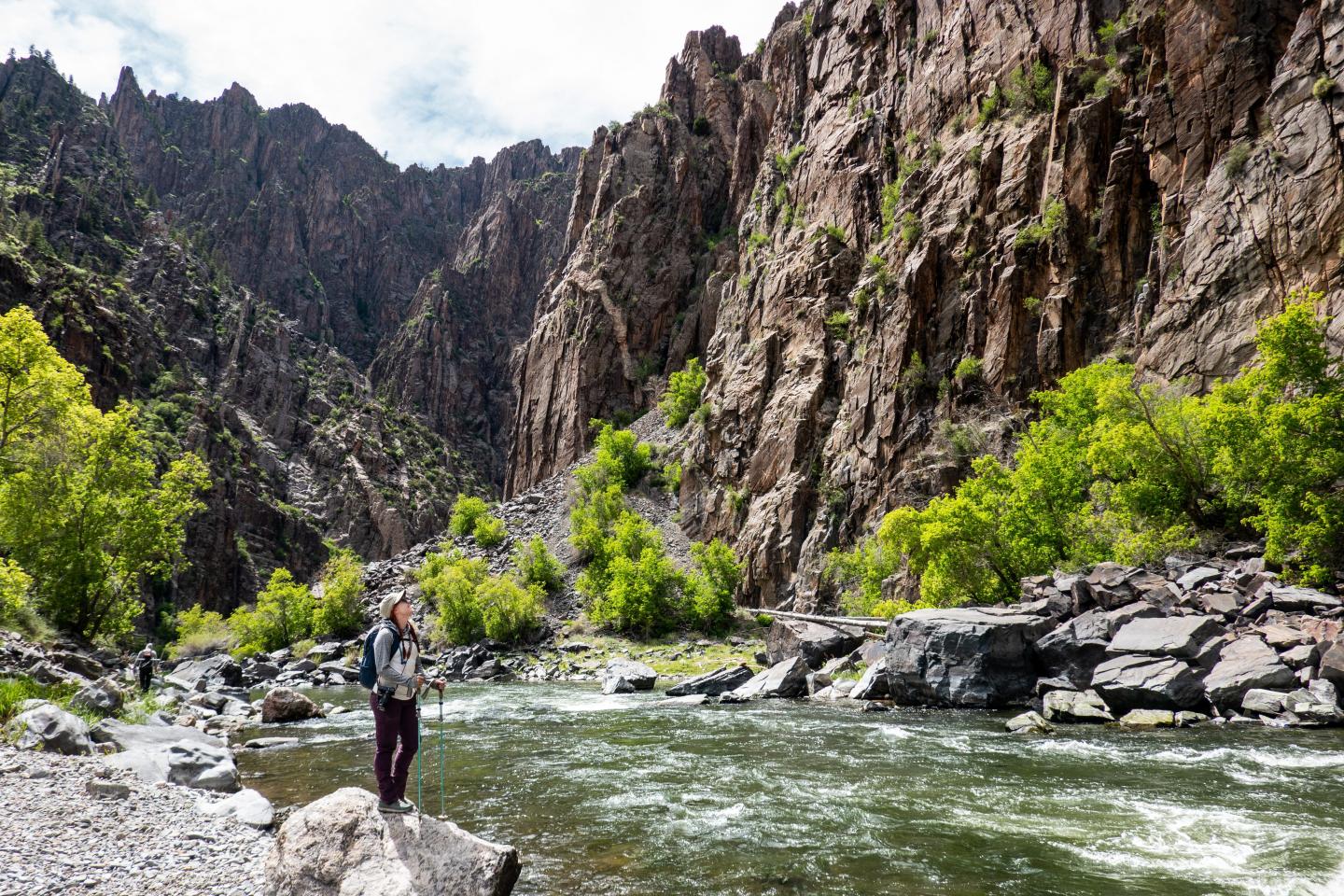
Explore more
You can learn more about the area’s Indigenous and frontier history at San Luis Valley Museum in Alamosa. If taking a road trip to the park, combine your trip to Great Sand Dunes with a visit to Black Canyon of the Gunnison National Park and Curecanti National Recreation Area to experience more of Colorado’s most incredible landscapes.
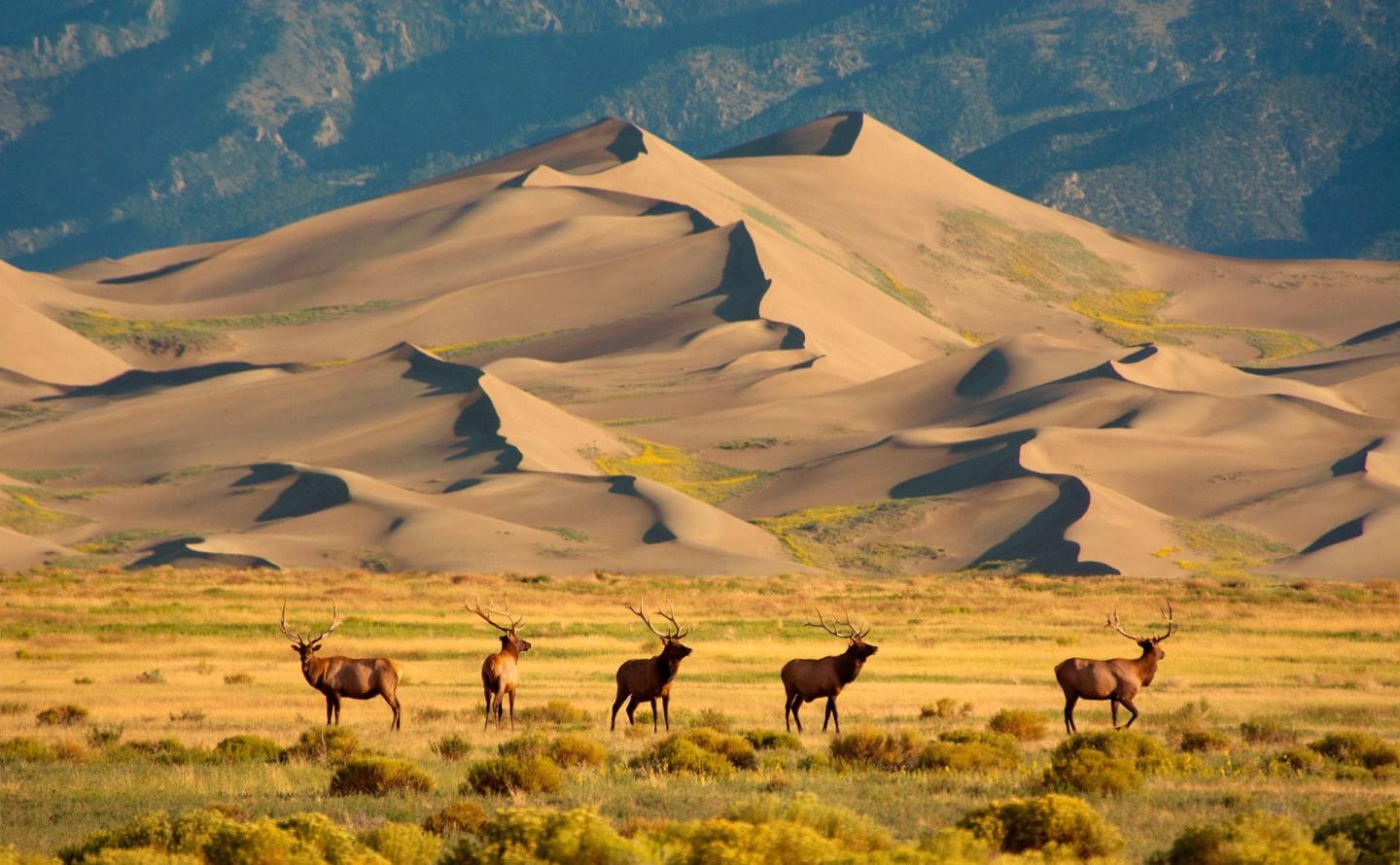
Shop the WNP collection
Our curated collection bring the park to you from the comfort of your own home. And, as always, 100% of net proceeds funds vital services and programs in the park.
Science anyone?
Geology of the Great Sand Dunes
Great Sand Dunes National Park and Preserve protects the largest sand dunes in North America, covering thirty square miles and reaching heights of 750 feet. This geologic marvel is made of soft, fine-grained sand and formed over millions of years. First, sediments from the San Juan and Sangre de Cristo Mountains, and water from receding glaciers flooded the valley and formed the massive Lake Alamosa. This lake slowly drained over time, leaving the sediments at the lake’s bottom to dry as well. The unique wind patterns deposited the lighter, smaller sediments at the foot of the Sangre de Cristo Range. After Lake Alamosa dried, wetlands, smaller lakes, seasonal creeks, and the Rio Grande separated the finer sand grains from heavier silts, pushing them onto the river banks where the winds picked them up and added them to the dune field.
Today, the vegetation in the valley prevents the dune field from growing significantly, but the ever-shifting sands are constantly reshaped by the forces of wind and water. Star Dune and Hidden Dune, both over 740 feet tall, tend to pass the title of the tallest North American dune back and forth between themselves. These dunes are tall enough to have avalanches of sand, which can create a humming sound. In fact, this sound inspired Bing Crosby’s 1940s song “The Singing Sands Of Alamosa.” Visitors can witness the sounds and sights of this ongoing sculpting of the land today.
Hydrology of the Dunes
Water is the glue of the vast dune field system, without which the sands would disperse over a much wider area. The creeks here are part of a deep aquifer that extends a mile beneath the surface. The moisture keeps the sand compacted and unable to scatter to the winds. Sand that is blown away is simply recycled back into the dunes after being carried by seasonal streams down to the valley floor. The sediments are then picked back up by the winds and returned to the dunes once more.
The aquifer also gives life to much of the vegetation on and around the dunes, which anchors even more sand in place, and provides the moisture for wetlands. These wetlands are host to a multitude of unique flora and fauna, from the migratory sandhill crane to the threatened slender spiderflower. The dunes themselves are often moist just a few inches below the surface, as they capture falling rain that allows plants like prairie sunflowers to grow on their surfaces. Winter precipitation in the Sangre de Cristo peaks combines with the steepness of the water flow from the mountains along the relatively smooth creek bed to create “waves” on this temporary Colorado beach. In a wet year, surge waves can reach up to a foot high.
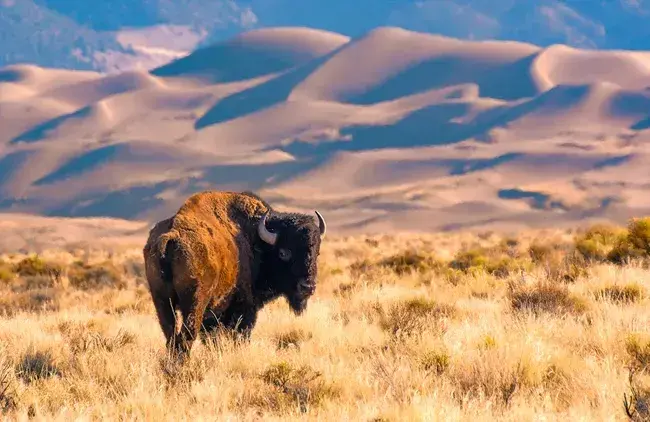
Biodiversity at Great Sand Dunes
While famous for these incredible dune fields, Great Sand Dunes National Park and Preserve is also home to many diverse high-elevation environments, from alpine forests and lakes to meadows and wetlands, including sabkhas, where white alkali deposits are found amid seasonally rising and falling groundwater. You can observe ancient bristlecone pines on rocky mountain tops and herds of elk and pronghorn among the vast grasslands.
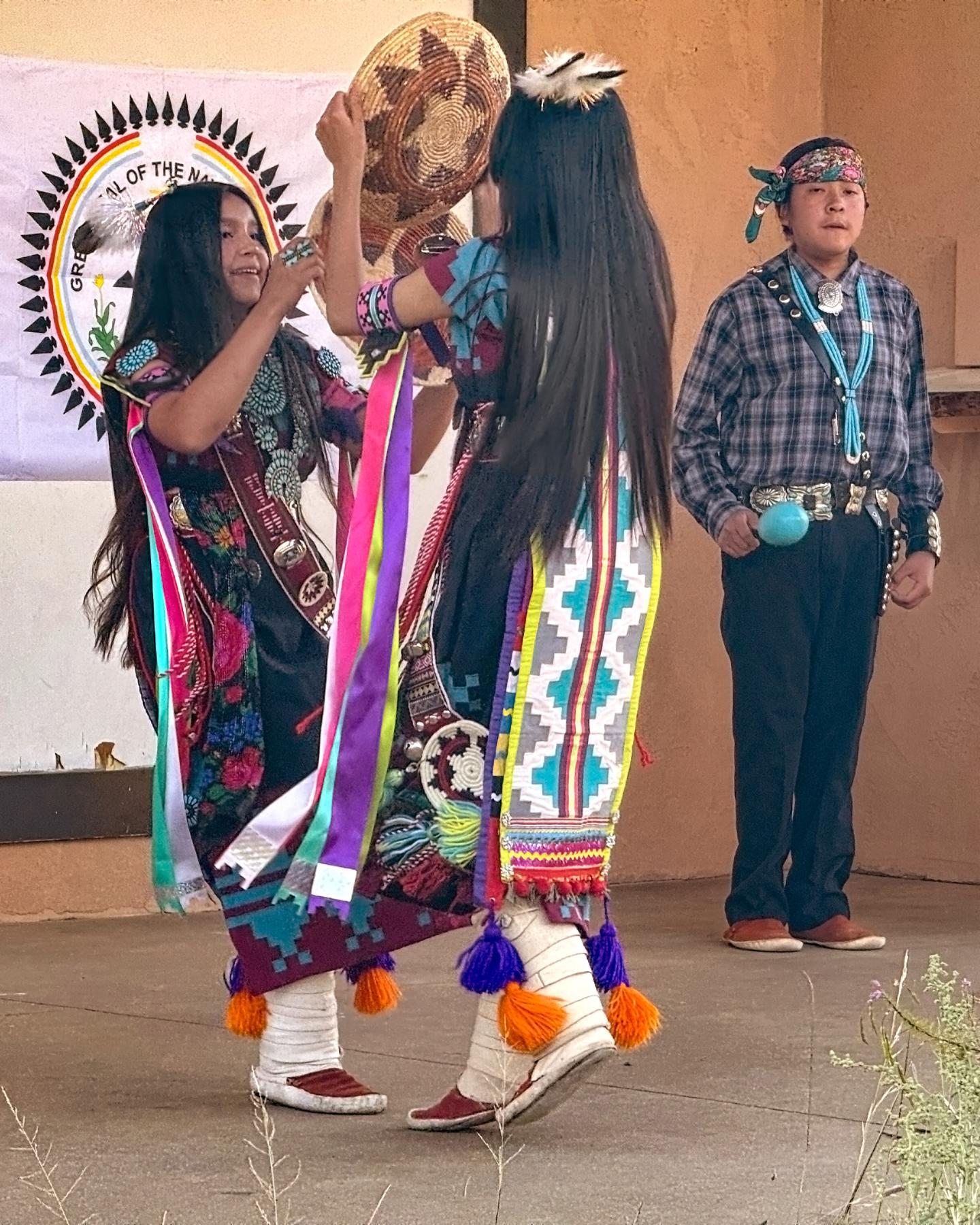
Indigenous and historic connections to the dunes
Indigenous groups have continuously inhabited San Luis Valley for at least 12 thousand years. They harvested many of the wild plants that call Great Sand Dunes National Park and Preserve home today. Cultural heritage sites at the park preserve evidence of Clovis and Folsom peoples and their distinctively designed stone projectiles. Over the years, the abundant water and food in the valley continued to provide for the ancestors of today’s Indigenous groups, including the Apache, Arapaho, Cheyenne, Comanche, Kiowa, Diné (Navajo), and Ute. The interactions between these tribes and their environment are told in their oral histories and are also evidenced by the over 200 culturally modified ponderosa pine trees at the park, which had their bark peeled to use as a resource primarily during the 1800s.
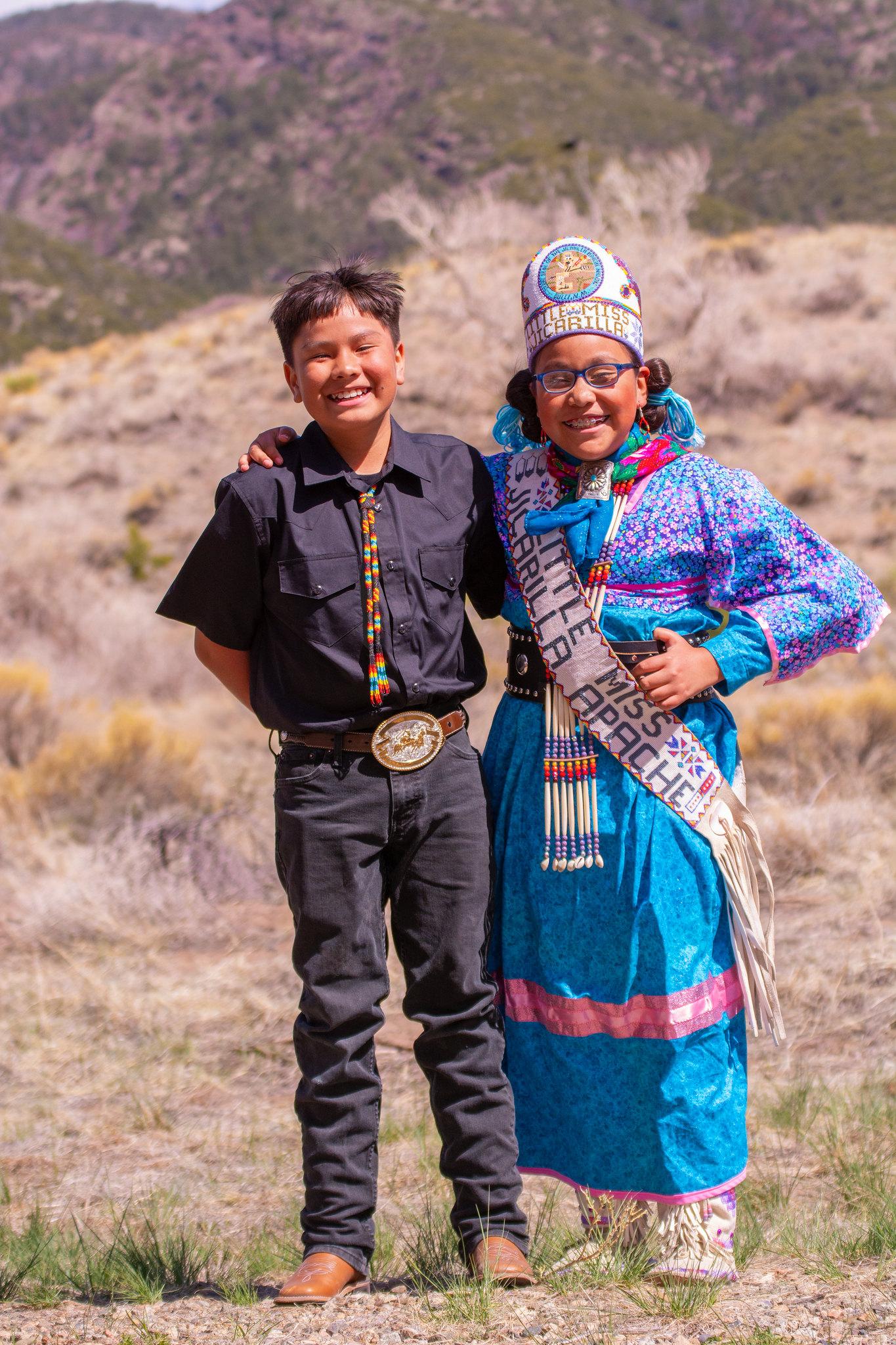
Sustaining traditions
Many Indigenous tribes continue to maintain their powerful connections to Great Sand Dunes. Tribes still use the park for some formal ceremonies as they always have, passing on their practices and history to the younger generations with field trips to the parks. The many affiliated tribes share their knowledge in consultations with the National Park Service. They have also been cultural ambassadors to visitors at park programs throughout the years, from Dineh Tah' Navajo dancers to a talks given by Elders.
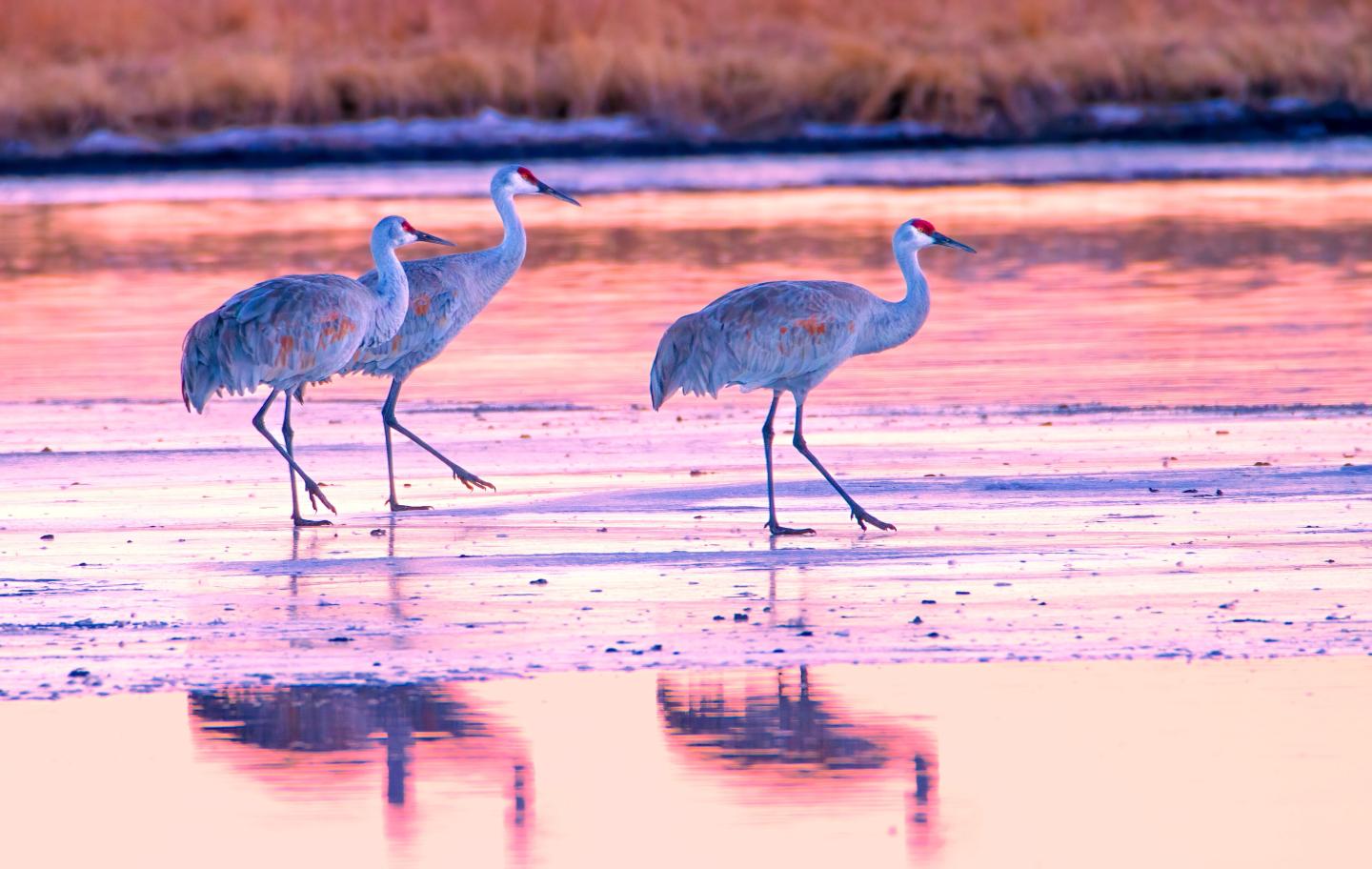
Know before you go
Keep the following in mind when planning your visit to Great Sand Dunes National Park and Preserve to ensure a respectful and reflective experience.
- Check the weather before your visit. Temperatures can swing dramatically between day and night, and sand surface temperatures can exceed 150°F in summer or -20°F in winter.
- There are no trails on the dune field, so be mindful of your surroundings, direction, and distance when exploring.
- Follow Leave No Trace Principles and take only photographs and memories—removing sand, plants, rocks, or cultural artifacts is strictly prohibited.
- Carry and drink plenty of water. The NPS recommends a gallon of water a day per person, especially during summer or while hiking on the dunes or at higher elevations.
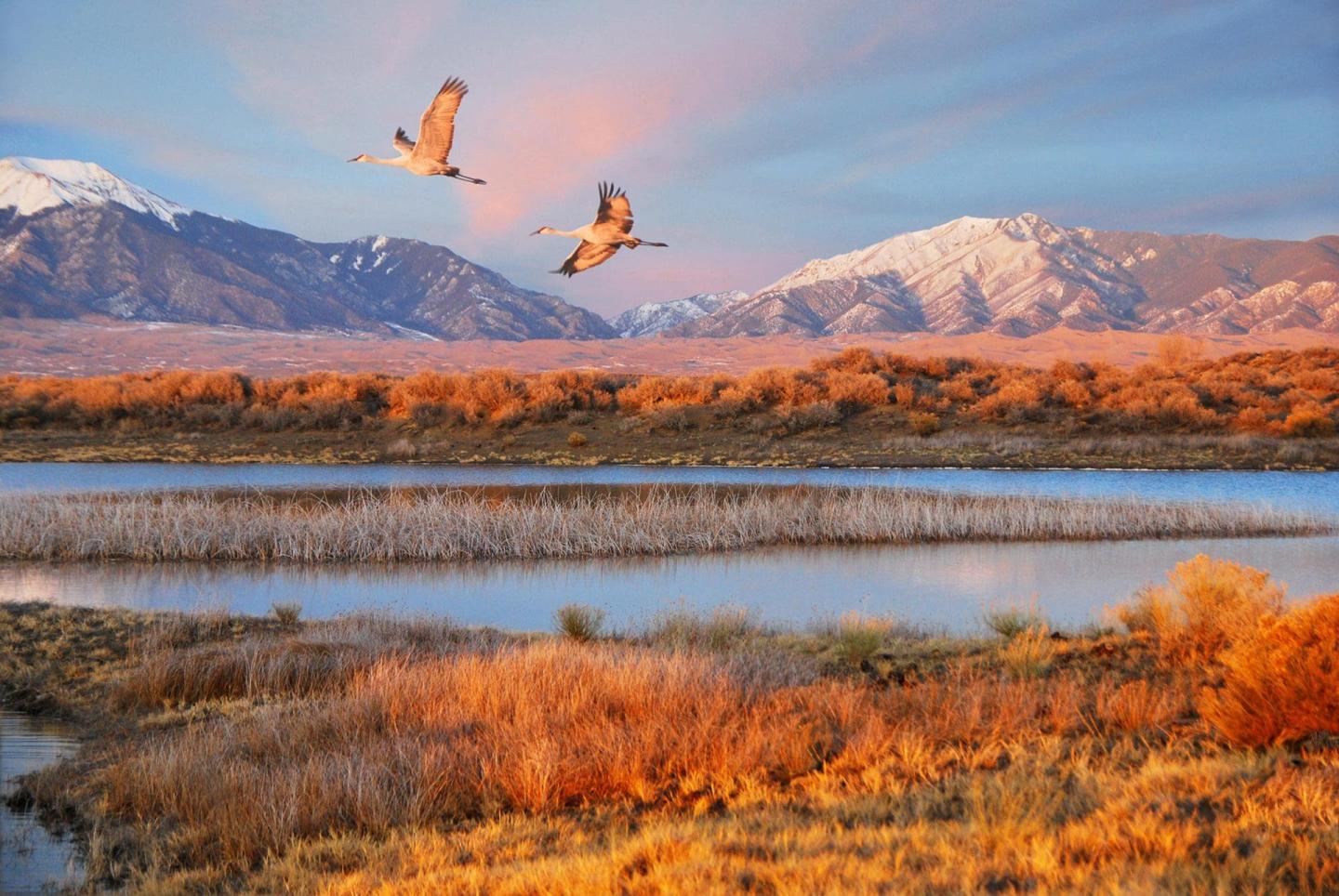
- Pets are welcome in the main use front country, but must be kept on a leash and cleaned up after at all times.
- Be mindful of the surface temperature of the sands both for you and any pets you are bringing with you. Wear close-toed shoes and consider dog booties to keep your furry friend’s paws comfortable.
- Keep a safe distance between you and any animals you may encounter to keep wildlife wild.
- Stop by the Great Sand Dunes Visitor Center to learn more about the park’s ecosystems and cultural history through exhibits and to gather information on ranger programs and trail conditions.
Most importantly, be sure to adventure responsibly.
Head out for adventure
Packing List
We recommend bringing the following items on your trip to Great Sand Dunes National Park and Preserve:
- Sun protection items such as sunscreen, sunglasses, and a wide-brimmed hat.
- Plenty of snacks and water. Bring at least one gallon of water per person, especially when hiking on the sands.
- Layers to stay comfortable on cool evenings.
- Sturdy, closed-toed shoes to keep ankles supported and keep hot sand out when hiking on the dunes.
- Insect repellent if visiting during the summer.
- Sand gear, including a sandboard or sled.
Before you head out, download the NPS app to access information on current conditions, trails, and safety tips to help you prepare for your journey into the dunes and beyond.
Remember to check weather conditions and alerts at nps.gov, pack appropriately, and respect the natural environment and cultural resources to ensure a safe and enjoyable trip. Start planning your trip today!



